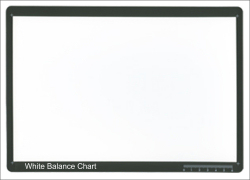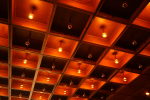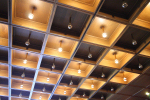
The regular 'white' daylight surrounding us is only for a few moments at mid day (with full sun light) 'white'. Daylight in the morning or in the evening and artificial light differs strongly from this natural real 'white' light but we see it as 'white' because we know it should be white.
The human visual system is able to compensate for changes in the color of the general light surrounding us. The surrounding natural light changes over the day strongly but we doesn't recognize this. This can be explained by evolutionary processes there the one with the best adaptation to changing lighting conditions had the best chance to survive because colors of enemies, surroundings would have been recognized the same all over the day. Someone who could identify correct colors had the best chances to make live-saving choices.
It is a natural 'white balance' process within our visual system and brain.
If we would see the 'real' colors of things, it would be a different story. Colors would change from early morning all the way through mid day and again to the evening. A camera as a senseless machine without our learnt abilities doesn't 'see' things the way we see them. It 'sees' everything correct, with all the color changes happen. A picture taken or a film recorded shows the 'real' colors. This images are strange to us because on a picture or film we cannot execute our natural ability to adjust the visible image.
As a result we interpret the taken or recorded images as 'wrong' but the 'wrong' colors of a late night shot or a shot under electrical illumination shows actually the 'correct' color situation. They only look wrong to us.
To fix this the image must be corrected in a way that it looks similar as if we would have seen it under optimal mid day conditions. Here the technical white balancing comes into play. Images are corrected that any 'white' parts in the image look exactly 'white'. The image is actually changed to match our visual system.

|
| professional white balance chart for camera adjustment |
For correct camera white balance setup 'White balance Charts', 100% neutral white control plates, are used. Pointing the camera at the white or gray reference card the camera does its white balance calculations.
 |
 |
 |
 |
| image too red-yellow, correction necessary |
image too blue, correction necessary |
indoor with artificial light |
indoor, white balance corrected |
On the RAW photo format images are taken and stored with all color content and necessary white balance can be executed later in the processing software. RAW provides the highest possible image quality because photos are not compressed and the images are as they were captured without any in-camera processing.